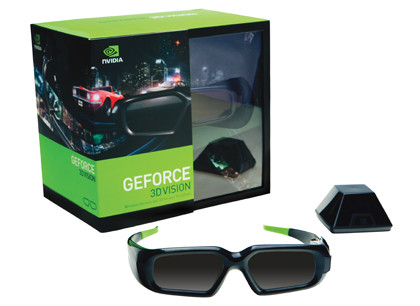Is 3D technology here to stay?
Smoke and spectacles

Originally, polarised 3D technology relied on linear polarisation and thus required level-headed viewing. More recently, circular polarisation has been used, allowing a degree of head-tilt without losing the 3D illusion.
However, if it's perfect colours and freedom to thrash your head about like a lunatic you desire, one solution is active shutter technology. Active-shutter 3D involves a pair of glasses, the lenses of which contain liquid crystals that can be alternated between transparent and black. At the same time, the display flips between the offset images for each eye. With a sufficiently high frame rate, the result is motion 3D.
Like polarised 3D, active-shutter 3D results in a dimmer image and along with the need for a shuttered glasses, it means active shutter requires specialised display technology supporting a higher frame rate (typically at least 100 frames per second).

However, a monitor with a higher refresh rate is cheaper and simpler than running a pair of polarised projectors. So, it's active-shutter technology that is currently the weapon of choice for PC gaming, with Nvidia's 3D Vision platform perhaps the most successful to date.
That said, what Nvidia 3D Vision long with all analgyph, polarised and active-shutter 3D tech share is the need to wear glasses. This, along with a feeling of eye strain, is probably what has so far prevented 3D from becoming a properly big deal. What we really want is 3D viewing without glasses. What we want is autostereoscopic 3D.
The trick here is to create a single display surface that can somehow send a different image to each eye. There are several different types, but they ultimately split into two groups – those that use head tracking technology to make sure each eye is seeing the correct image and those that simply kick out a different image based on the viewing angle.
Glasses-free 3D

As if chucking out silly glasses wasn't enough, autostereoscopic 3D also makes possible movement parallax. For the uninitiated, that means getting a different view of a scene or object depending on your vantage point. In other words, move your head around and you'll get a different look at things, just like in real life.
Sign up for breaking news, reviews, opinion, top tech deals, and more.
However, there is one final problem that even autostereoscopic technology can't avoid. In the real world, objects at different distances have different focal points. But a simulated 3D image is generated from a uniform distance. And that confuses the hell out of your eye muscles, eye lenses and ultimately your poor brain.
It's more problematical on a big desktop display than, say, a handheld device with a puny screen. But it's something that's not going to be going away short of using true holographic 3D technology.
--------------------------------------------------------------------------------------------------
First published in PC Format Issue 261
Technology and cars. Increasingly the twain shall meet. Which is handy, because Jeremy (Twitter) is addicted to both. Long-time tech journalist, former editor of iCar magazine and incumbent car guru for T3 magazine, Jeremy reckons in-car technology is about to go thermonuclear. No, not exploding cars. That would be silly. And dangerous. But rather an explosive period of unprecedented innovation. Enjoy the ride.